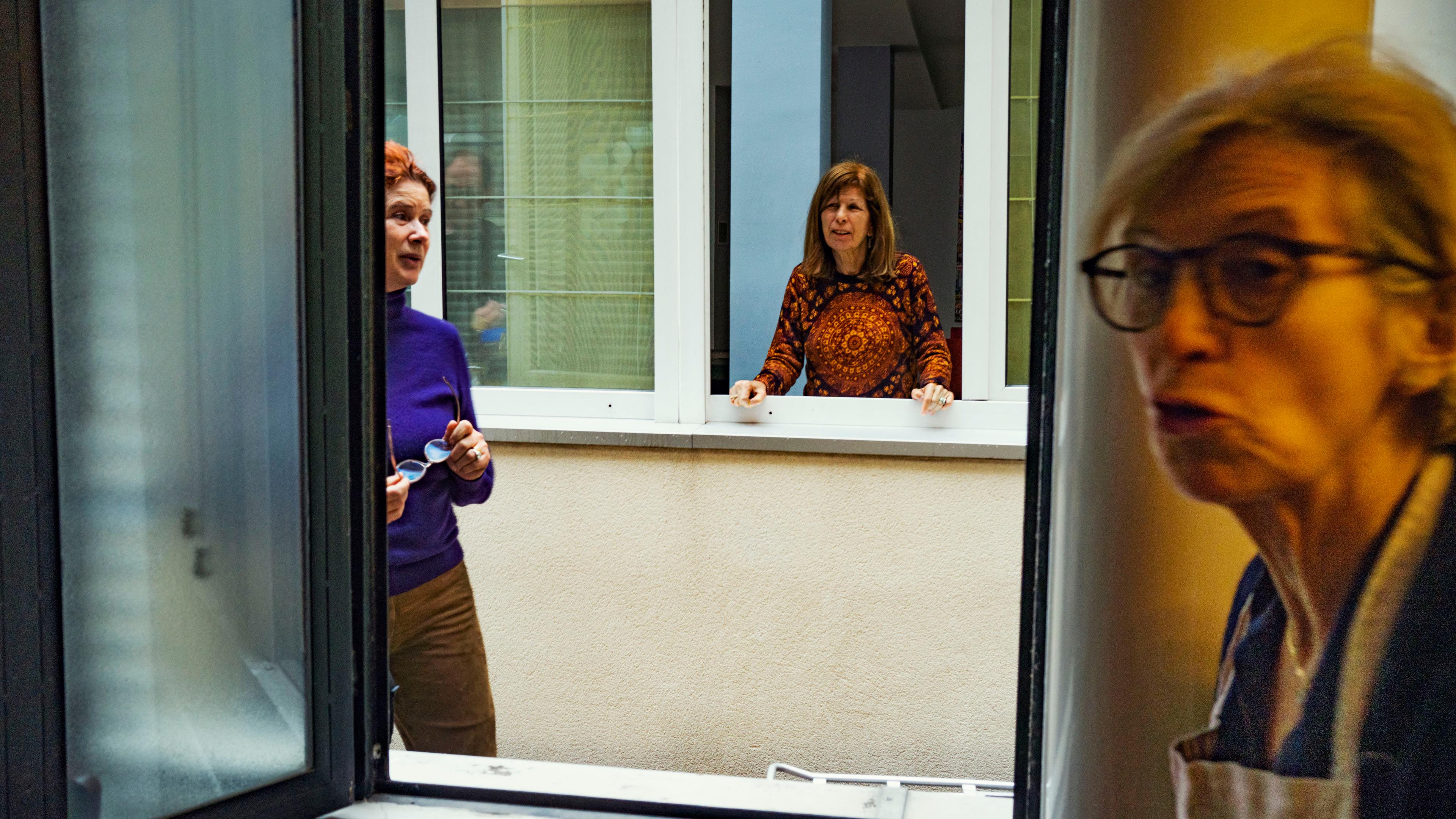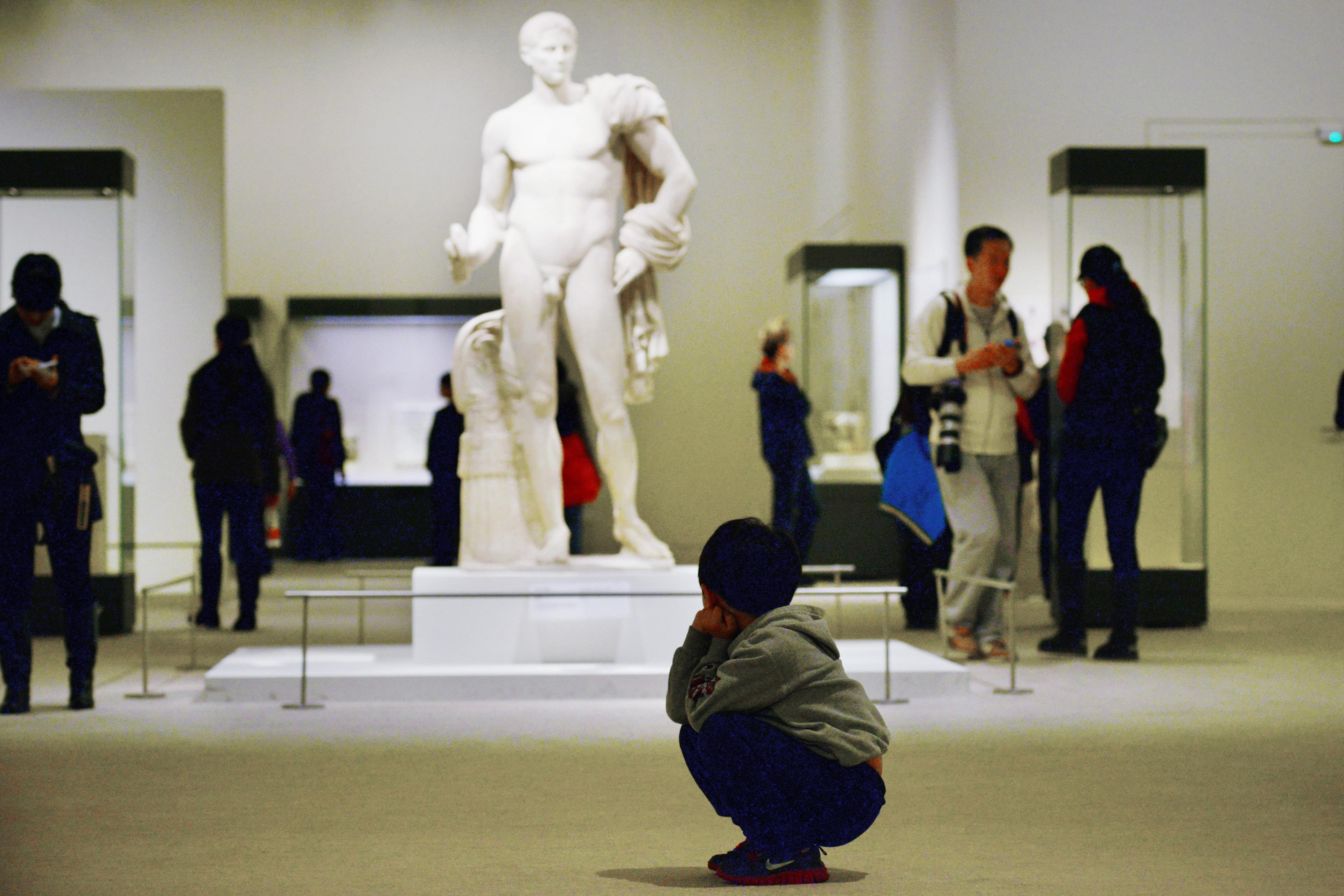The acrimonious exchanges between overly invested parents and underpaid youth soccer referees are almost their own spectator sport. Acts of offensive shouting and name-calling are defended with imperious warnings and penalty cards. Neutral onlookers would swear that the arguing sides had witnessed completely different events. However ridiculous this game-day behaviour may seem, it epitomises why so many of our relationships go awry.
The inferences we draw about the thoughts, feelings and motivations of others are a core building block of our relationships, but these inferences require effort and can often be misguided. It’s easy to see the barriers that the opposing soccer factions face in taking each others’ perspectives. Parents’ track record of objectivity and rationality when it comes to their children is suspect at best. Mix in a competitive outcome, pride on both sides, and the refs’ tiring schedules, and it becomes easy to see why perspective-taking suffers.
As a social psychologist, I am convinced that understanding how people make inferences about others through their social perspective-taking attempts is key to improving relationships, whether we’re talking about soccer parents and referees, spouses, colleagues or political rivals. I’m not referring to increasing people’s empathy (experiencing parallel feelings when witnessing other people’s emotions). Rather, social perspective-taking is the process through which we infer what other people are experiencing. It’s our cognitive understanding of the mental worlds of others: their beliefs, and how they perceive the situation. By observing the structural weak spots in the social perspective-taking process and addressing them, I’m optimistic it should be possible to uncover new strategies for improving the relationships that matter most to us.
These insights are especially needed right now. Our relationship with our relationships sits at a historically awkward moment. Science tells us that relationships are more important than ever – the key ingredient to our happiness, as important to our health as not smoking. Researchers have found that people who lack robust relationships die younger on average. Yet newspapers remind us daily that we seem to be getting worse at forming and maintaining our interpersonal connections. Political divides make neighbours un-neighbourly; social media seems increasingly antisocial. Recently, the US surgeon general has even declared a ‘loneliness epidemic’… and he’s been saying that since before the pandemic.
To begin healing our relationships, let’s look at how they are built. They are the aggregation of interactions between people – and, crucially, how each side interprets these interactions. After all, two different people can walk away from the same interaction with very different impressions. I may feel that the six-pack of beer I gave to my wife for her birthday was my best present yet; she may perceive it differently. Furthermore, she may well stitch this perception into a broader narrative of past birthdays and anniversaries to conclude that her husband is more self-interested than selfless.
The stories or narratives we form about other people’s behaviour are derived from our attempts to understand what is going on inside their minds. This is where social psychology can help, by illuminating the social perspective-taking process. Recent research suggests that this process unfolds in four phases: perception, motivation, strategy-selection, and evaluation.
In the first step, you perceive another person (or people) of interest. You might see someone walking down the street, a friend’s text message might pop up, or your mind might drift to a recent conversation. At the soccer game, perhaps the referee who had previously seemed invisible, makes a call that does not go your child’s way. Regardless of how it occurs, someone must appear on your radar in some way. At this point, you have the opportunity to perceive them positively, negatively or objectively.
Next, comes a litmus test. Are you sufficiently motivated to put forth the mental effort to try to figure out the contents of this person’s head? Whether you deem this person worthy of your perspective-taking efforts is one part of the motivational decision. But other contextual factors matter too: is the situation high-stakes or hardly consequential? How well can you focus for the social perspective-taking attempt? Do you have the peace and quiet of an empty house or are you trapped amid the chaos of nine-year-olds in a bouncy castle? Also, is there potential for a long-term relationship – will this ref, who has accused your child of committing a nonexistent foul, return to referee a future game?
You may embrace the role of the dogged detective who continues to amass clues and make inferences
Assuming enough factors tip the balance to motivate you to try to take the other person’s perspective, you must next orchestrate a strategic approach. Like a detective, you need to gather clues as to what the target individual might be thinking and feeling. As the clues amass, you take different strategic approaches to make inferences based on those clues. If two data points suggest the person of interest is happy but three other signals imply frustration, are you witnessing mixed emotions? If so, what thoughts might be generating those mixed feelings? The need to match the right clue-gathering strategies with the right inferences for the right person in a given context creates a complex calculus to say the least.
Finally, perspective-taking attempts are rounded out by a process of evaluation. Maybe you think you know what this person is feeling, or you decide you’ll never figure it out, or you conclude that knowing what they are thinking is not so important. Sometimes these conclusions can bring the process to a close. In other instances, you may embrace the role of the dogged detective who continues to amass clues and make inferences because something about the evidence seems inconsistent. If the results of the evaluation don’t conclude your perspective-taking attempt, they can kick you back to an earlier stage in the process to keep working. With some luck, actual feedback from the target may inform your evaluation; although, often, you are simply taking a best guess.
Note that the perception, motivation, strategic approach and evaluation steps do not unfold neatly and sequentially in every perspective-taking attempt. However, they do provide the basic structure of what happens whenever people attempt to take the perspective of others.
Notably, each step requires more conscious effort than the previous one. Rarely do any of us expend effort to perceive others – they naturally pop into our consciousness. After that, the motivation to discern their thoughts and feelings often arises naturally – such as when your friend is in a foul mood, and you find yourself wondering why. At other times, it can require deliberate effort – when was the last time any of us paused to consider the thoughts and feelings of the cashier, the telemarketer or the referee? Once motivated to start perspective-taking, the next steps become harder. Selecting the right strategies to collect the right data to make the right inferences about others is real mental work. Finally, the evaluation step is unusually tricky because it is so rare to receive definitive feedback on the accuracy of our inferences. On a daily basis, you can expect to arrive at hundreds of conclusions across all your social interactions. Yet, you’d be lucky to learn how accurate you were on more than a couple of them.
So, how might breaking down the social perspective-taking process and identifying the weak spots offer clues that could aid our relationships? Extracting practical lessons from this line of research is in its infancy, but it’s already possible to see how it might work. Given the increasing degree of difficulty through the stages of perspective-taking, the early steps offer the most promise. Surprising though it may seem, it’s possible to improve our perspective-taking efforts right from the outset of the process – at the moment of perception. Through no particular fault of our own, most of us chronically succumb to biases as soon as we perceive others. This is because we all cope with the complexity of our social worlds in two ways that cause problems. First, by trying to conserve mental energy (we are all ‘cognitive misers’, as the psychologists Susan Fiske and Shelley Taylor put it). Second, by trying to preserve a positive sense of self.
Within these two broad goals of saving cognitive effort and maintaining a positive sense of self lie scores of specific biases that can derail anyone’s efforts to perceive others as they truly are. As an example, the bias of instinctively perceiving others as members of in-groups and out-groups helps save mental effort by simplifying the world into two basic categories. Furthermore, one’s sense of self is enhanced by conferring multiple benefits on to those perceived as belonging to one’s in-group – fellow parents, fans of the ‘right’ sports teams, members of the same religion, and so on. By contrast, immediate impressions of out-group members are typically more stereotyped, simplistic and negative.
Simple awareness of these problematic biases can endow us with more humility as we enter into the perspective-taking process. But what else can we all do? One practical approach when interacting with others is to take a moment to consider the many characteristics and dimensions upon which you might be similar. Why not define the bounds of your in-groups more generously? Sure, you may be gunning for the same promotion as your colleague, but you do also work for the same organisation. Why focus on the referee’s odd uniform and unique role when you could view them as more like a teammate – after all, everyone is trying to provide the children with a positive athletic experience. By habitually expanding our in-groups in this way, we initiate the social perspective-taking process from a point of common ground. More charitable inferences about others are likely to follow. Improved relationships may ensue.
When others realise you are trying to take their perspective, they will like you better
Complementing these ideas, all of us could look to increase our social perspective-taking motivation too. Even conjuring up a little extra motivation could pay big dividends. You can probably think of people for whom you should probably try harder and more often to understand where they are coming from. Ironically, many of us often slack in our motivation to figure out the thoughts and feelings of friends, family members and loved ones because it’s natural to assume they will always be there for us. Making a concerted effort, maybe three times per week, to think about how others might perceive your mutual interactions with them could turn around a fraught relationship. You might even have opportunities to ask others directly for their perception of the situation. One youth soccer league has come up with an ingenious method for bolstering parents’ motivation to take the perspective of the referees: any parent’s complaint about a call results in a mandatory tour of duty as the following weekend’s ref.
Aiming to boost your motivation to engage in the social perspective-taking process could have indirect benefits too. For instance, research suggests that when others realise you are trying to take their perspective, they will like you better, feel a greater sense of commonality with you, and even help you more. Presumably, in those instances where you try hard and are accurate, you’ll see even more benefits. So the next time you have the opportunity to tell someone you really want to understand how they think about an issue, grab that chance.
Given the recency of these findings, developing further practical strategies will take time. However, there is reason for optimism that improving our social perspective-taking capacities can improve our relationships. For instance, my colleagues and I recently explored the impact of an intervention for teachers that illustrated how cognitive biases might be impeding their ability to take the perspective of their students (based on similar principles to those described above). The findings were promising, with apparent benefits for the teachers’ and students’ relationships, as well as the students’ grades.
Of course, we all have relationships that could use help now. So why not run your own informal experiments targeting the easier, earlier phases in the social perspective-taking process? If you can perceive others more favourably in the first place and motivate yourself to try to see others’ perspectives more frequently, you might start to see your relationships from a new perspective. For the soccer parents among us, we might even give next weekend’s ref the benefit of the doubt!








